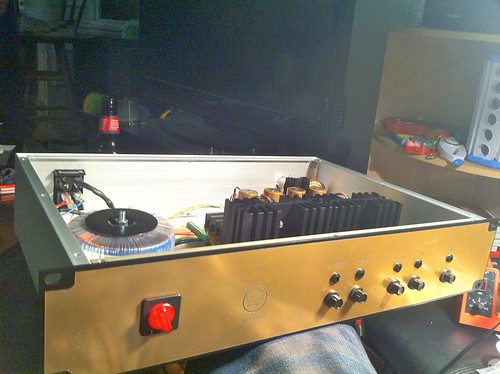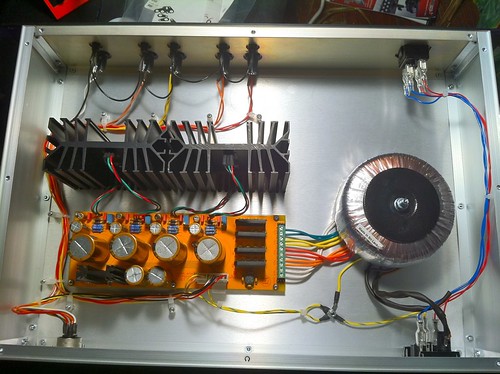Rob,
Here is some text that came from a couple of emails with two different folks. I have edited it to make the most sense (hopefully!).
I am pretty certain 'Chung will have pictures that will make use want to eat the inside of his PSU case for dinner!

These are verbal descriptions but do make sense if you read thru them carefully and visualize or even make a sketch.
All of these references are from a viewpoint if you are
inside the case looking at the inside of case side of each part.
IEC
-Top Lug of IEC --> Chassis star ground stud
-Right Lug of IEC --> Fuse Holder Side Lug
-Left Lug of IEC --> Top Right Lug on front panel main switch
Fuse Holder
-Fuse Holder Center Lug - Top Left Lug on front panel main
Voltage Selector
-Lower left lug --> Toroid Brown & --> Bottom Left Lug on front panel main switch
-Upper left lug --> Toroid Gray
-Upper right lug --> Toroid Violet
-Lower right lug --> Toroid Blue & --> Bottom Right Lug on front panel main switch
The pdf on the toroid page of my site will help you confirm all of the connections for AC between the toroid and the PCB.
Star Ground Stud Connections
-Connection to upper lug on IEC(already mentioned above)
-Green/Yellow Screen from toroid
-CHASSIS plated thru holes on PCB beside the AC inlet header
-GND plated thru holes on PCB on the other side of the AC inlet header
I should also mention that these notes are specifically for the lead colors on the toroids that come from me
only. I am pretty sure they will be different if your toroid came from Cemal or Volker.
Hope that helps!
Cheers, Jeff












